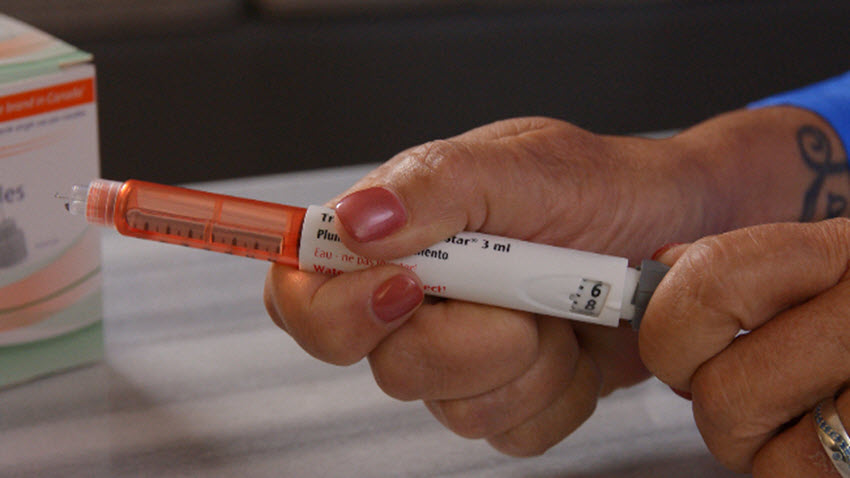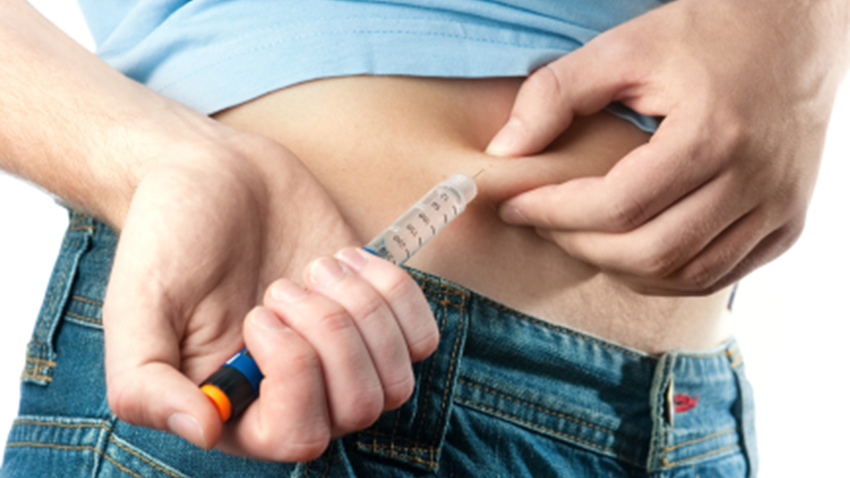Chronic Disease Education
Acute Condition Education
Working with your Family Physician
Working with Allied Care Providers
Safe and Effective Insulin Injection Techniques
Knowledge is Power.
True/False - Quiz: Do You Understand Safe and Effective Insulin Injection Techniques?
Information - Safe and Effective Insulin Injection Techniques
 If you have type 1 diabetes, your body doesn’t produce any insulin, so you will need to take it daily. Insulin is secreted by the pancreas when food is absorbed, so as food accumulates in the blood in someone with type 1 diabetes, sugar levels get too high. If you have type 2 diabetes your pancreas does not produce enough insulin, or your body does not properly use the insulin it makes.
If you have type 1 diabetes, your body doesn’t produce any insulin, so you will need to take it daily. Insulin is secreted by the pancreas when food is absorbed, so as food accumulates in the blood in someone with type 1 diabetes, sugar levels get too high. If you have type 2 diabetes your pancreas does not produce enough insulin, or your body does not properly use the insulin it makes.
How to Safely Inject Insulin
Before you give your insulin injection, the first thing that you should do is gather your supplies and wash your hands. The next step is preparing your insulin pen for injection. It’s very important that you use a new needle each time that you’re going to do an injection and prime your pen.
• Dial in whatever the recommendation is from the manufacturer, whether it’s two or three units.
• Hold the pen upright and depress the plunger until you see a drop of insulin at the tip of the pen.
• Return the dose to zero, and now you’re ready to prepare your dose.
• Dial in the dose that you’re required to take.
• Pick the site that you’re going to use. Make sure the site is clean, and that you’re not injecting into any area of lipohypertrophy.
• Inject your pen needle in a 90-degree angle into the site that you’ve chosen, depress the plunger and hold it down for 10 seconds.
Once you’re done, you’ll remove the insulin pen in the same angle in which you inserted it. Your injection is now complete, next you should take your outer cover of your pen needle to remove the pen needle and put it in the sharps container.
How to Prevent Lipohypertrophy
 If you repeatedly inject insulin in the same location on your body, fat and scar tissue can accumulate. Lipohypertrophy is an abnormal accumulation of fat underneath the surface of the skin. Stats show that up to 50 percent of people with type 1 diabetes experience lipohypertrophy at some point. To prevent lipohypertrophy, always rotate your sites and rotate within your sites. There’s a lot of space that you can use within each injection zone. Also, you want to make sure that you’re using a clean needle each time that you’re injecting. It can take a patient three to six months to recover from lipohypertrophy. If you do have lipohypertrophy, ensure it’s resolved before you start to use that site again.
If you repeatedly inject insulin in the same location on your body, fat and scar tissue can accumulate. Lipohypertrophy is an abnormal accumulation of fat underneath the surface of the skin. Stats show that up to 50 percent of people with type 1 diabetes experience lipohypertrophy at some point. To prevent lipohypertrophy, always rotate your sites and rotate within your sites. There’s a lot of space that you can use within each injection zone. Also, you want to make sure that you’re using a clean needle each time that you’re injecting. It can take a patient three to six months to recover from lipohypertrophy. If you do have lipohypertrophy, ensure it’s resolved before you start to use that site again.
If you jam your insulin injection into your tissue, you increase your risk of hitting muscle. You also then squish your fat or subcutaneous tissue, and that can affect the way that you are absorbing your insulin. Instead of jamming in your insulin injection, think about sliding it in as you would into butter. How you inject your insulin is as important as the insulin that you inject. So, it’s important to know the steps that should be properly followed.
Talk to your endocrinologist or diabetes nurse educator if you’d like more information on proper insulin injection techniques.
Visit HealthChoicesFirst.com for more videos and resources on diabetes.
Print this Action Plan and check off items that you want to discuss with your healthcare provider
-
It’s very important that you use a new needle each time that you’re going to do an injection and prime your pen.
-
If you repeatedly inject insulin in the same location on your body, fat and scar tissue can accumulate (lipohypertrophy).
-
To prevent lipohypertrophy, always rotate your sites and rotate within your sites.
-
If you do have lipohypertrophy, ensure it’s resolved before you start to use that site again.
-
Instead of jamming in your insulin injection, think about sliding it in as you would into butter.

